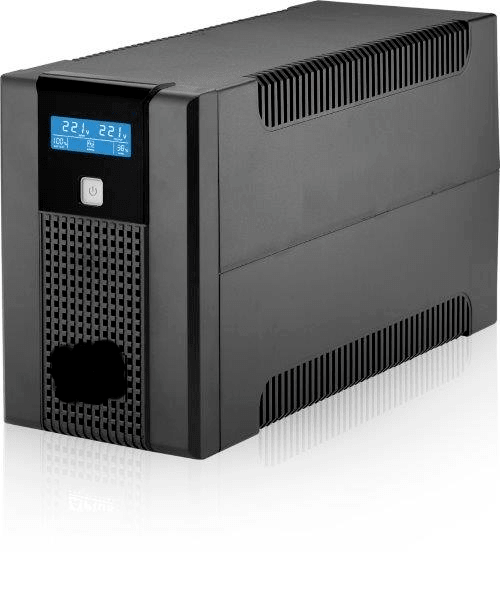5 Things To Keep In Mind While Choosing The Best Inverter For Home

You’re working from home, have presentations to make and important calls to wrap up with clients who can decide whether you’ll be getting your next promotion or not. You’re on a call with your client when all of a sudden there’s a power cut, and your PC isn’t working, nor is your Wi-Fi. The scenario sounds awful, doesn’t it? Inverters are the go-to solution for such scenarios, providing a reliable source of constant power supply, so you can be free from the disruptions of a power cut that may affect your presentation or your chances of getting an appraisal.
But with so many models available, how do you choose the best inverter for home? The wrong choice can either leave you with insufficient backup or have you overspend on features you don’t need. Today, we’ll walk you through all the important factors you need to consider before making your purchase.
1. Calculate Your Power Needs
The very first thing is understanding your household’s power backup needs, which acts as the foundation for choosing the right capacity. So how do you estimate the household’s power needs? Create a list of all important appliances you wish to continue operating in a power outage – fans, lights, Wi-Fi, refrigerator and perhaps even your computer. Verify the wattage ratings of these appliances, typically located in the instruction manual or on the appliance itself. Sum all the wattages and maintain a margin of 10-20% for safety to account for future requirements or surge power
Let’s say your essential requirements add up to 600 W. The best inverter for home in this case would be at least 700 -800 VA, which ensures you aren’t overloading the unit, further reducing its lifetime.
Tip – If you use multiple appliances at once, the best inverter for home would be one with a higher capacity for smoother performance.
2. Choose the Right Inverter
When choosing the best inverter for home, not all types are made equally. The type you choose affects both appliance safety and performance in the long run.
- Pure Sine Wave Inverter: Produces a consistent and clean supply similar to the main grid, which is ideal for sensitive devices, for computers, microwave ovens and refrigerators. Higher cost, but it is more efficient too.
- Square Wave Inverter: Suitable for rougher needs where sensitive devices are not to rely on it.
- Modified Sine Wave Inverter – More affordable as compared to a Pure Sine Wave Inverter, and is suitable for basic appliances like fans and lights. It can be a less efficient option for higher-end appliances.
Tip – The best possible long-term solution, which is value for money for your home and is smooth in operation, helping you work seamlessly while protecting your appliances, is a Pure Sine Wave Inverter.
3. Look for Safety Features and Efficiency
The best inverter for home doesn’t just ensure an uninterrupted source of power, but it also protects your appliances from damage, along with defending itself.
- Alerts and Indicators: For malfunction, overload, or low battery warnings.
- Short-Circuit Protection: When the load limit surpasses safe thresholds, Overload Protection cuts the system off. This safeguards the system against short circuits or defective wiring.
- Auto-Reset: When a defect is fixed, it restarts on its own.
- Voltage Protection: Guards against fluctuations in voltage that are too high or too low for both the device and appliances.
Tip: Check the efficiency of the inverter in addition to the previously listed attributes. Because a high-efficiency inverter uses less energy as heat, your power costs will go down.
4. Select the Right Battery
The inverter itself doesn’t store power in case of a power failure – the battery does. So the choice of battery is as crucial as the inverter.
Types of Batteries
- Maintenance-Free Battery – Sealed design, no need for water top-up, slightly more expensive.
- Lead-Acid Battery – Affordable but requires regular top-ups with distilled water.
- Tubular Battery – More durable, higher efficiency and longer life. Requires less maintenance.
Battery Capacity: The capacity of the battery to keep the power supply uninterrupted is measured in Ampere-Hours (Ah). Higher Ah means longer continuous backup. The battery you choose should align with the expected duration of power cuts and your load requirements.
Formula:
Battery size = (Inverter watts ÷ battery voltage) × backup hours
For instance, for 800 W of load and 3 hours backup on a 12V system:
Battery size = (800 ÷ 12) × 3 = 200 Ah
Matching your inverter with the correct battery ensures optimal performance and longer life for both.
5. Brand Reputation and After-Sales Support
Choosing the best inverter for home isn’t just about features; it’s also about durability and trust. The right brand will:
- Have an extensive service network for quick support.
- Offer consistent quality and reliable performance.
- Provide comprehensive and longer warranty coverage.
Conclusion
Power outages are unexpected, but your comfort and efficiency shouldn’t be. With correct load calculations, the right type of inverter, the right battery to go with it, and proper emphasis on safety features, you can spend money once and have it pay for itself for years to come.
The best inverter for home suits your requirements, is affordable according to your budget, and is from a reliable brand. Regardless of whether you’re protecting your work-from-home station, defending key appliances, or just providing comfort during power outages, the proper inverter can be the real deal.



